
Congratulations to our two Washington County 4-H Livestock Skill A Thon teams! Team members were: Allie Akers, Greyson Brough, Adleigh Day, Grace Hammond, Case Karmire, Addison Purlee and Clara Zinser. They placed 4th and 7th out of several teams at the Area II Contest. At the contest they were responsible for identifying feeds, breeds, meats and equipment in addition to taking two exams related to the industry and quality assurance. CDE teams are new to Washington County 4-H. There are many opportunities for youth in grades 3-12 to participate.

WHO: Any Washington County 4-H Member in grades 3-12
WHAT: Forestry & Entomology Contest
WHEN: November 12, 2024
WHERE: Paoli Community Building
We are looking for 4-H members interested in Forestry and Entomology judging. The contest is a similar format to the Livestock Skill-a-Thon. At the forestry contest members will identify leaves, seeds, insects and wood samples and take an exam. Entomology involves insect ID and an exam. Interested individuals should reach out to Taylor by October 11.
Practices will be held after school at the Extension Office.
Participants must attend at least one practice to compete.

The Indiana State Department of Agriculture (ISDA) and partners throughout the state have worked with the Gulf Hypoxia Program (GHP) to develop a no-cost program with a focus on increasing the knowledge and use of soil sampling as a nutrient management practice to benefit farm operations. The program, titled Indiana’s Mississippi River Basin Soil Sampling Program, is open now for applicants through Nov. 1, 2024.
“Soil health is incredibly important, and our farmers remain diligent in protecting and enhancing their farms’ soil properties,” said Lt. Gov. Suzanne Crouch, Secretary of Agriculture and Rural Development. “One way to enhance soil health is to identify nutrient levels via soil sampling. Unfortunately, this can be another expense farmers cannot afford, so we are thankful that with the help of our partners, farmers can sign up to have their soil sampled and tested at no cost.”
ISDA promotes the importance of nutrient management and the principle of the 4R Nutrient Stewardship framework. The 4R framework incorporates using the “Right Source, Right Rate, Right Time, and Right Place” to achieve cropping system goals. The program focuses on soil sampling and testing because it is a key component, and first step, of developing a plan for nutrient management.
Soil sampling provides an assessment of the soil’s fertility which can be used for making fertilizer application recommendations, assessing available nutrients over time, increase farmer profitability and enhance environmental protection by reducing the risk of nutrient loss. This project was developed to help further Indiana’s State Nutrient Reduction Strategy efforts.
“Farmers bottom lines are tighter than ever, so this free program will be welcomed again with open arms,” said ISDA Director Don Lamb. “Last year’s free soil sampling program was so successful we had to close program sign-ups sooner than anticipated to ensure we had enough available resources, so we are beyond excited to bring this program back to Hoosier farmers this fall.”
This program includes row crop, pasture, hay and specialty crop fields located within Indiana’s portion of the Mississippi River Basin. Eligible landowners will be prioritized by acreage enrolled (i.e., 100 acres or less), fields that have never been soil sampled and fields that haven’t been sampled regularly (i.e., within the last 4 years). Further prioritization may be implemented based on ISDA’s workload capacity. This program excludes hobby gardens and private lawns. Interested farmers can sign-up online at ISDA’s website or by reaching out to
Sign-ups begin Monday, Sept. 23, 2024, and ISDA is accepting registrations until Friday, Nov. 1, 2024. To sign up, or if you have any questions, please contact Ophelia Davis at 317-232-0305 or
This program is meant to demonstrate the importance of soil sampling and the valuable information it can provide. This program is not meant to act or replace an operation’s existing soil testing schedule. This program was made possible thanks to ISDA, Indiana Soybean Alliance, Indiana Corn Marketing Council, Indiana Agriculture Nutrient Alliance (IANA),Indiana Conservation Partnership (ICP) members, farmers and crop advisors.

The U.S. Department of Agriculture (USDA) and the state of Indiana announced today the expansion of the Indiana Conservation Reserve Enhancement Program (CREP) – broadening the program from 65 counties to the state’s entire 92 counties and increasing the acreage goal to 100,000 acres. The expansion will include 27 additional watersheds in the state.
The Administrator for the USDA’s Farm Service Agency (FSA), Zach Ducheneaux, and the Director of the Indiana State Department of Agriculture, Don Lamb, met today to formally sign the program’s expansion into action in Pierceton, Ind.
“This expansion of the CREP program in Indiana is a direct reflection of its success and the conservation priorities that we and the state of Indiana hold so high,” said Ducheneaux. “This program is an incredibly important resource, benefiting both agriculture and the environment throughout this state.”
The purpose of the Indiana CREP is to improve water quality by reducing sediment and nutrient runoff and enhance wildlife habitats. Currently, it has more than 22,000 acres of agricultural land enrolled in 11 designated watersheds in the Wabash and White River systems, including the Tippecanoe, Upper White River, Highland/Pigeon, Upper Wabash, Middle Wabash-Deer, Middle Wabash-Little Vermillion, Middle Wabash-Busseron, Lower Wabash, Lower White, Lower East Fork White and the Upper East Fork White watersheds.
“We are thrilled that Indiana’s CREP program will be expanded statewide,” said Lamb. “This program is proven to enhance our watersheds and improve habitats. This funding will go a long way to economically support landowners while enhancing our watersheds. We are grateful that USDA has made expanding this program a priority.”
Hosted by longtime supporters of the Indiana CREP, Don and Darci Zolman - row crop farmers in Pierceton, Ind., today’s signing ceremony not only formalized the expansion of the program to all counties in the state, but also added a conservation practice, “Shallow Water Areas for Wildlife” (Conservation Practice CP9), to the already robust list of practices currently part of the CREP:
- CP2, Establishment of Permanent Native Grasses
- CP3A, Harwood Tree Planting
- CP4D, Permanent Wildlife Habitat
- CP21, Filter Strips
- CP22, Riparian Buffer
- CP23, Wetland Restoration
- CP23A, Wetland Restoration, Non-Floodplain
- CP31, Bottomland Timber Establishment on Wetlands
The expansion of the Indiana CREP is set to take effect Oct. 1, 2024.
“An expanded opportunity like CREP for Indiana Hoosiers is simply not possible without a solid partnership,” said Julia A. Wickard, State Executive Director for FSA in Indiana . “In Indiana, partnerships work, and I am beyond proud of the work we are collectively doing as an Indiana conservation partnership to provide sustainable and economic resources to all Hoosier producers and landowners.”[WD1]
Currently, CREP has 40 projects in 26 states. In total, more than 678,000 acres are enrolled in CREP. The Indiana CREP is part of USDA’s broader effort to leverage CREP as an important tool to address climate change and other natural resources challenges while expanding opportunities for producers and communities, especially those historically underserved by USDA.
More Information
To learn more about FSA programs, producers can contact their local USDA Service Center. Producers can also prepare maps for acreage reporting as well as manage farm loans and view other farm records data and customer information by logging into their farmers.gov account. If you don’t have an account, sign up today.
FSA helps America’s farmers, ranchers and forest landowners invest in, improve, protect and expand their agricultural operations through the delivery of agricultural programs for all Americans. FSA implements agricultural policy, administers credit and loan programs, and manages conservation, commodity, disaster recovery and marketing programs through a national network of state and county offices and locally elected county committees. For more information, visit fsa.usda.gov.

This informal report by the Division of Entomology & Plant Pathology is a commentary on insects, diseases, and curiosities division staff encounter on a week-to-week basis. Comments and questions about this report are welcome and can be sent to your respective Inspector.
Our Website
Inspector Territories
Eric Biddinger (Nursery Inspector & Compliance Officer) -
Fall is the time that social bee and wasp nests are at their largest population and are most likely to be noticed. I frequently get questions about hives found in buildings or trees and the potential for people to get stung. I often start with these three questions.
First, what kind of insect is it? A cicada killer, while large and intimidating, is quite non-threatening. German yellowjackets or bald-faced hornets, on the other hand, have a mean streak and become quite aggressive when the hive is disturbed. If you need assistance identifying a bee or wasp, please contact your nursery inspector or county Purdue Extension office.
Secondly, where is the nest? For hives high up in trees or in infrequently traveled places on a property, it may be best to simply avoid them. In contrast, a ground nest next to a frequently used sidewalk or a hive next to a front door is a recipe for someone to get stung and may need to be dealt with. Hives inside structures also need to be carefully considered for potential structural damage.
Finally, if you decide to eradicate the nest, is this a DIY job or should you hire a professional? There are several pesticide products available to homeowners. If you use one of these products, read and follow label directions. Very large hives or structural nests may require specialized tools or expertise. Consult with a pest control operator for your best options.
Purdue Extension Social Bees and Wasps Publication
Purdue Extension Solitary Bees and Wasps Publication
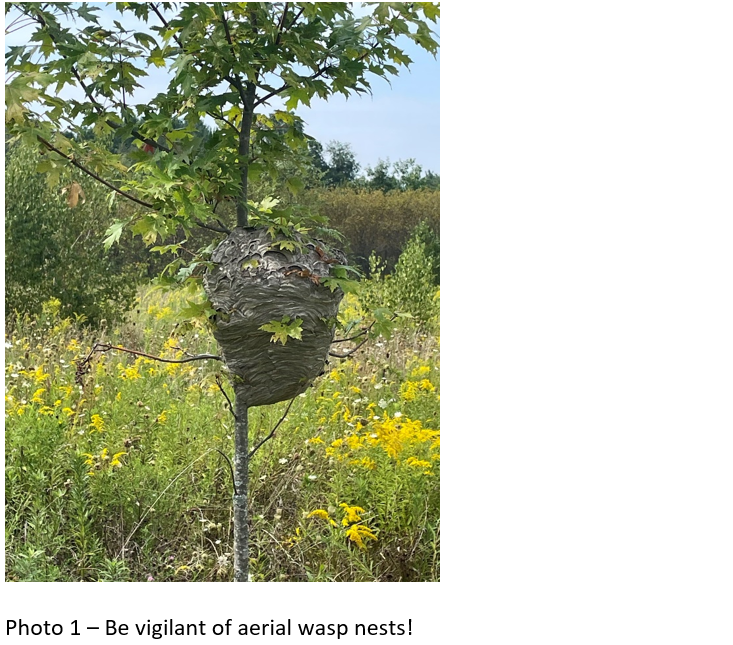
Kristy Stultz (Nursery Inspector & Compliance Officer) -
As we’re all wrapping up regular inspections, there aren’t usually a lot of new things to report, but I came across two items I can’t recall seeing previously, so I thought I’d share.
First is white prunicola scale (Pseudaulacaspis prunicola) as confirmed by Purdue. This is a non-native hard-shell scale making control a little more difficult. The elongated white scale is the males while the females are round. In this picture it appears the female covers are left are from a previous generation. They are identical in appearance to white peach scale (Pseudaulacaspis pentagona). These two species can actually be differentiated only by a scale expert. P. pentagona is a more southern species where it can have at least three generations a year.
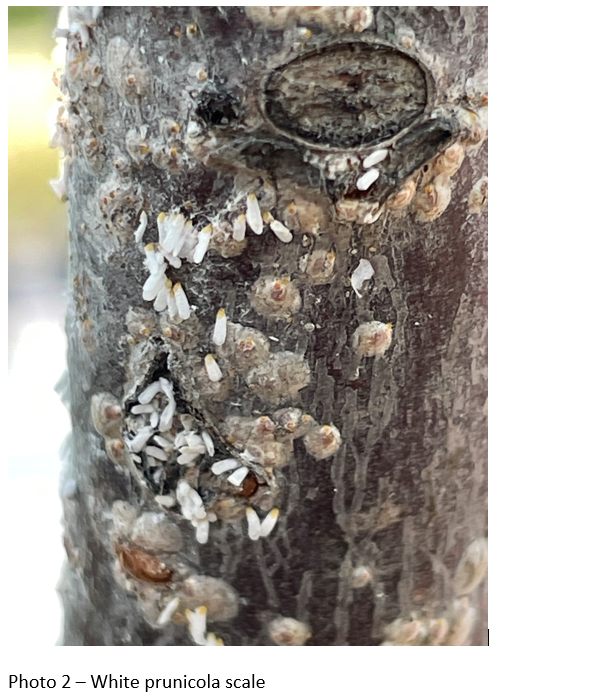
Treatment for both species is the same. While there are natural predators, high populations will likely need more intensive management. Using systemic chemical applications for pests like these needs to be done very cautiously. When a species is insect-pollinated, systemic chemical application, if done at the wrong time, can cause harm to pollinators. As we always say, the label is the law. Read it. Follow it and ensure the timing of application is done to control the problem with the least amount of auxiliary damage.
I also wanted to share a little pic of a Carolina mantid. I don’t see them very often so I spent a little extra time with them during my inspection.
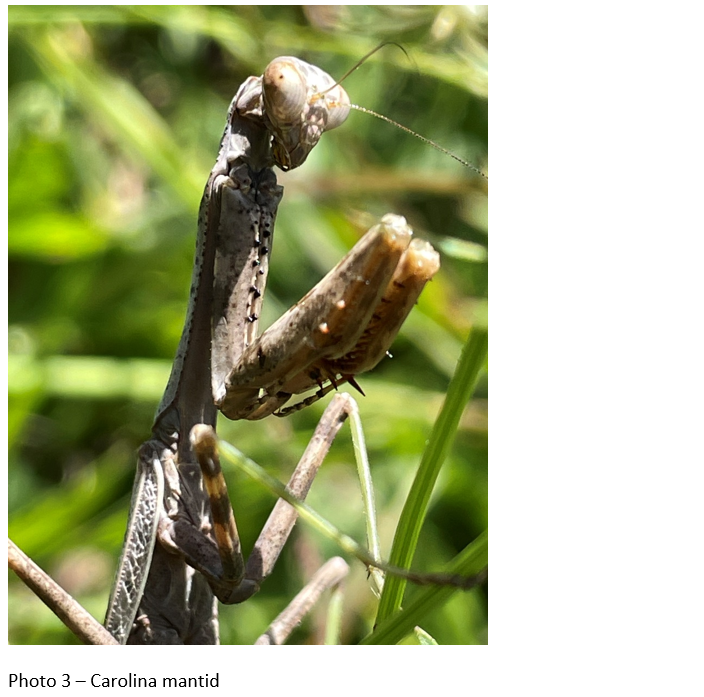
Lastly, remember spotted lanternfly is on the move. Now is a great time to find adults and maybe even some freshly laid egg masses. If you think you’ve spotted SLF in Indiana, we’ve got lots of ways to report it. You can use our online reporting tool, call 866-NO-EXOTIC, or pop us an email
Thanks for subscribing to the Division of Entomology & Plant Pathology’s Weekly Review!
Angela Rust (Nursery Inspector & Compliance Officer) -
I’m including photos of a few things found at the end of the inspection season this year.
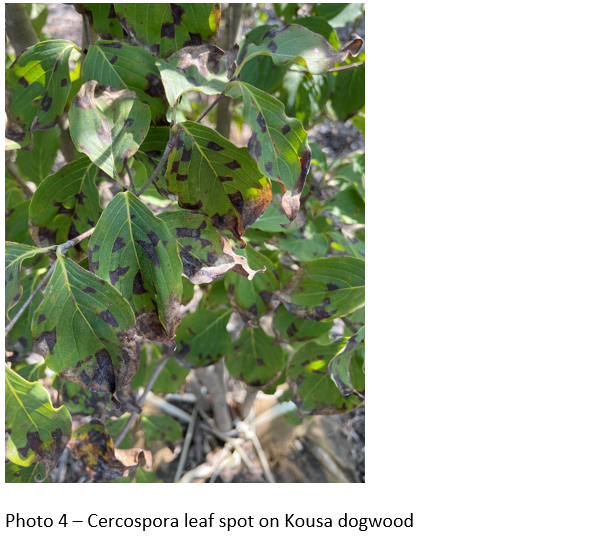
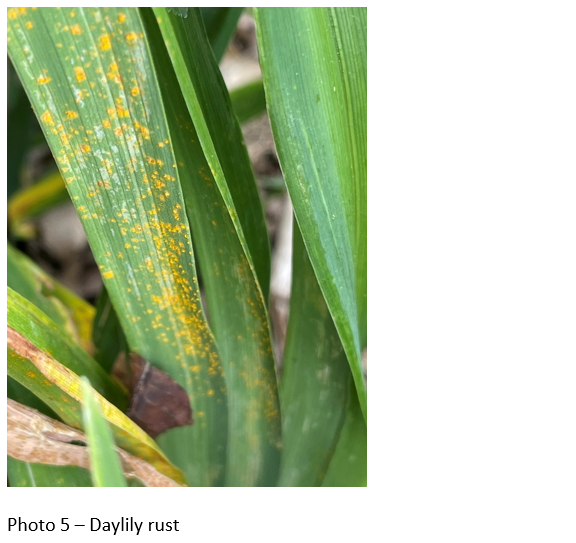
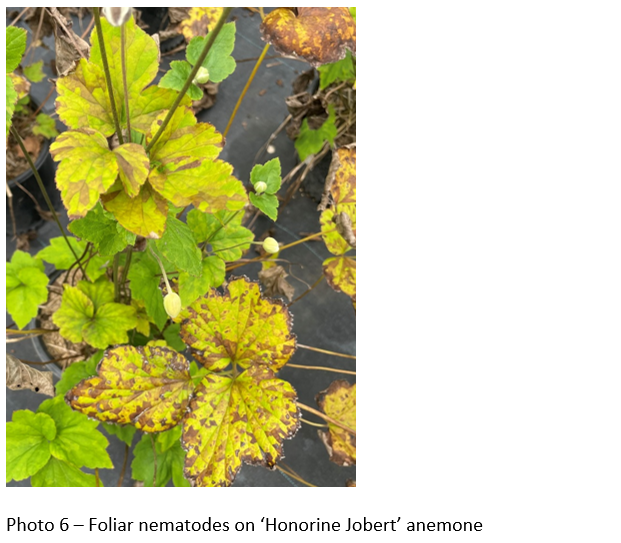
Ren Hall (Nursery Inspector & Compliance Officer) -
A couple photos from inspections last week.
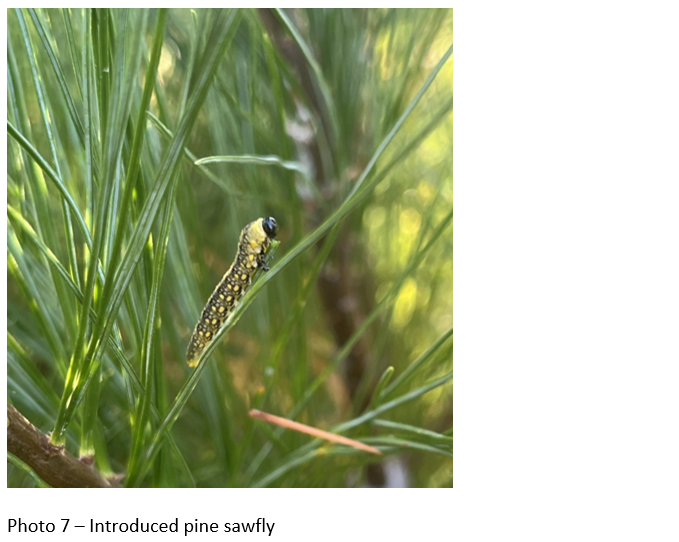
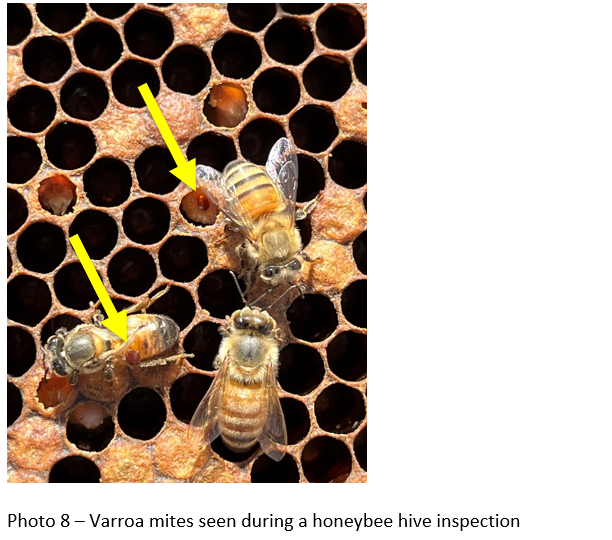
SalemLeader.com
Leader Publishing Company of Salem, Inc.
P.O. Box 506
117-119 East Walnut Street
Salem, Indiana. 47167
Phone: 812-883-3281 | Fax: 812-883-4446
Business Hours:
Mondays through Fridays, 9:00am - 5:00pm
News:
news@salemleader.com
Office:
office@salemleader.com
Publisher:
publisher@salemleader.com
Business
- More Business News
- Go To Guide
- Business Directory
- Auctions
Education
- More Education News
Opinion
- Editorials
- Letters to the Editor
- Columns
- Unsung Heroes
- Days Gone By
- In the Garden
- Guest Columns
- Reader's Poll
- Salem Leader Forum
- Questions and Answers
Church
- Bible Aerobics
- Church News
- Church Directory

